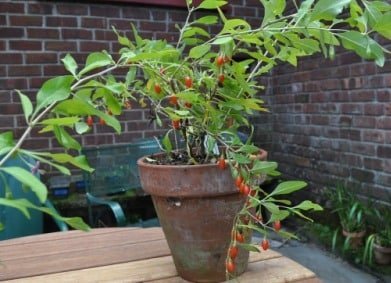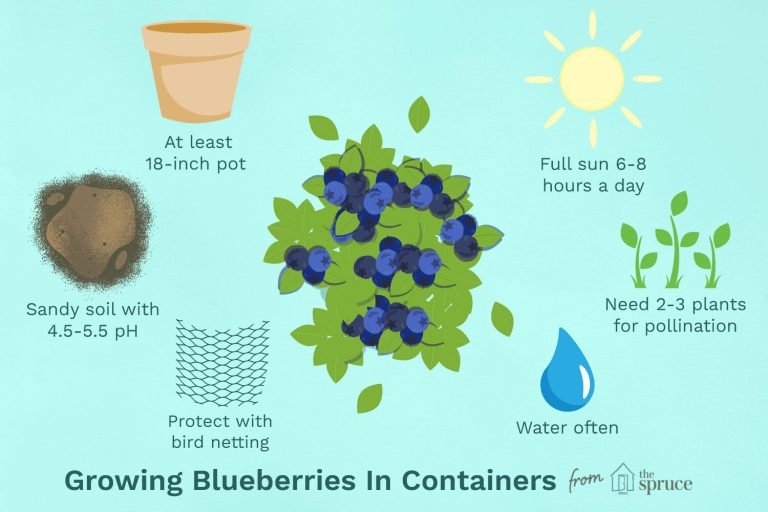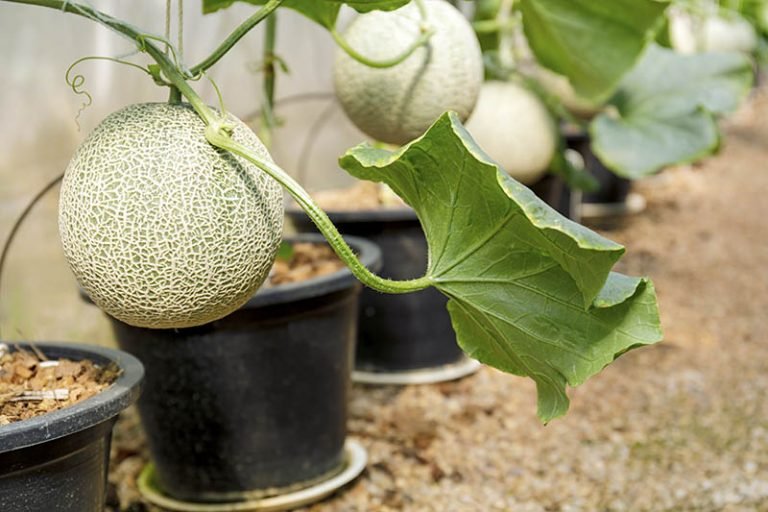how to grow goji berries in a pot – [Beginners Guide]
Are you tired of buying expensive berries from the grocery store? Do you want to grow your own superfood right in your own backyard? If so, growing goji berries in a pot may be the perfect solution for you!
As someone who loves gardening and trying new things, I’ve had great success growing goji berries in pots. Not only do they provide a delicious and nutritious snack, but they also have numerous health benefits, such as boosting the immune system and improving eyesight.
One of the biggest advantages of growing goji berries in a pot is the convenience and versatility it offers. You can place your pot on a balcony, patio, or even indoors near a sunny window. This means you don’t need a large backyard or extensive gardening knowledge to enjoy fresh, homegrown goji berries.
In this guide, we’ll cover everything you need to know to grow healthy and productive goji berry plants in a pot. From choosing the right container and soil to proper watering and pruning techniques, we’ll give you all the information you need to get started. We’ll also provide some troubleshooting tips to help you overcome common problems like pests and diseases.
So, whether you’re a seasoned gardener or just starting out, growing goji berries in a pot is a great way to add a nutritious and flavorful addition to your homegrown produce. Let’s dive in and get started!
Pot or container selection
When it comes to growing goji berries in a pot, the size and construction of the pot are also important factors to consider. Goji berries need plenty of space to grow and develop their extensive root system, so a larger pot is recommended.
A pot that is at least 18 inches (45 cm) in diameter and 18 inches (45 cm) deep is ideal for growing goji berries. This size will allow for ample root space and help prevent the plants from becoming root-bound.
In terms of construction, it’s best to choose a pot made of a durable material, such as plastic or ceramic. Terra cotta pots can also work well, but they may dry out more quickly and require more frequent watering. Avoid using metal or wood pots, as they can leach chemicals into the soil or deteriorate over time.
Like with cherry tomatoes, it’s important to ensure that your goji berry pot has proper drainage. This means choosing a pot with drainage holes in the bottom or drilling some yourself. You can also add a layer of gravel or rocks to the bottom of the pot to aid in drainage.
Overall, selecting the right size and construction for your goji berry pot is key to promoting healthy growth and a bountiful harvest. With the right pot and proper care, you can enjoy the many health benefits and delicious taste of homegrown goji berries.
Make suitable soil mix
Growing goji berries in a pot requires a soil mix that is well-suited for container-grown plants. Since goji berries prefer well-draining soil, it’s important to use a soil mix that can provide good drainage while also holding enough moisture for the plant’s root system. A good soil mix for growing goji berries should be rich in organic matter and should have a pH level between 6.0 and 7.0.
To make a suitable soil mix for goji berries, you can start with a high-quality potting mix and add some organic amendments, such as compost, to improve the soil structure and nutrient content. You can also add some perlite or vermiculite to improve drainage and prevent soil compaction. Additionally, you can use organic fertilizers, like bone meal or blood meal, to provide additional nutrients to your plants.
It’s important to note that using garden soil or topsoil for container-grown plants is not recommended, as it can be too heavy and compacted for potted plants. Garden soil can also contain weed seeds and harmful pathogens that can damage your plants.
Overall, choosing the right soil mix is essential for the optimal growth of your goji berry plants in a pot. By using a high-quality potting mix and adding the right amendments, you can provide your plants with the nutrients and drainage they need to thrive.
How to plant the goji berries?
Growing goji berries in pots is similar to growing cherry tomatoes. Here’s a step-by-step guide to planting goji berries in a pot at home:
Step 1: Choose the right pot
Choose a pot that is at least 18 inches wide and 18 inches deep to accommodate the root system of your goji berry plant. The pot should have drainage holes to prevent waterlogging.
Step 2: Prepare the soil mix
Goji berries prefer well-draining soil that is slightly acidic with a pH range of 6.0-7.0. Use a potting mix that is well-draining, and slightly acidic. You can create a mixture using peat moss, perlite, vermiculite, and coarse sand in equal proportions.
Step 3: Plant the goji berry
Fill the pot with the soil mix to about two-thirds of its capacity. Dig a hole in the center of the pot that is big enough to accommodate the root ball of the goji berry plant. Gently remove the plant from its container, and place it in the hole. Make sure the top of the root ball is level with the soil surface. Fill in around the root ball with soil, gently tamping it down to remove any air pockets. Water the plant well to help settle the soil around the roots.
Step 4: Support the plant
Goji berry plants can grow quite tall, and they may need support as they grow. Consider adding a stake or trellis to the pot to help support the plant.
Step 5: Water and fertilize
Water the plant deeply once or twice a week, depending on the weather and the size of the pot. Make sure the soil is moist but not waterlogged. Goji berries require regular fertilization to thrive. Use a balanced fertilizer that is low in nitrogen, such as a 5-10-10 formula. Fertilize the plant once a month during the growing season, following the instructions on the fertilizer package for the recommended amount and frequency.
With the right soil mix, support, and care, your goji berry plant can produce a bountiful harvest of nutrient-rich berries.
How to care for goji berries?
Goji berries are easy to grow in a pot at home and can thrive with proper care. Here are some important steps you should take to care for your goji berry plant:
Watering Requirement
Goji berries prefer well-draining soil that is moist but not waterlogged. Water the plant deeply when the top 1 inch of soil is dry to the touch. In the summer, when the plant is actively growing, you may need to water it every few days. In the winter, you can reduce watering to once a week. Be sure to water the soil directly rather than the leaves to prevent fungal diseases.
Fertilizer Requirement
Goji berries benefit from regular fertilization with a balanced fertilizer, such as a 10-10-10 formula, during the growing season. Apply fertilizer every 4-6 weeks according to the package instructions. Avoid overfertilizing, as this can lead to excessive foliage growth at the expense of fruit production.
Sunlight Needs
Goji berries require full sun to thrive, so choose a spot in your garden or patio that gets at least 6 hours of direct sunlight per day. If you live in an area with hot summers, consider providing some afternoon shade to prevent sunscald on the fruit.
Pruning & Training
Pruning and training can help keep your goji berry plant healthy and productive. Prune your plant in the spring by removing any dead or damaged branches and cutting back any new growth by about a third. You can also use pruning to shape the plant and promote air circulation.
Training your goji berry plant to a trellis or stake can help prevent it from becoming unruly and can make harvesting easier. Tie the main stem to the support structure and use clips to secure any lateral branches. As the plant grows, continue to tie it to the support structure and remove any side shoots that develop along the main stem.
Other Care
In addition to watering, fertilizing, and pruning, there are a few other things you can do to care for your goji berry plant:
- Apply a layer of mulch around the base of the plant to help retain moisture and suppress weeds.
- Monitor your plant for pests and diseases, such as aphids and powdery mildew. Treat any issues promptly to prevent them from spreading.
- Harvest your goji berries when they are fully ripe, which is usually in late summer or early fall. The berries should be plump, juicy, and bright red.
- In the winter, protect your goji berry plant from frost by covering it with a blanket or burlap if temperatures drop below freezing.
With proper care, your goji berry plant should produce an abundance of delicious and nutritious berries for years to come.
Common problems
Other Issues
In addition to pests, insects, diseases, and poor production, there are some other issues that can arise when growing goji berries in a pot at home. These include:
- Root-bound plants: If your goji berry plant outgrows its pot, its roots may become crowded and restricted. This can lead to stunted growth, poor fruit production, and other problems. To prevent this, transplant your goji berry plant into a larger pot or prune its roots periodically.
- Environmental stress: Goji berries are sensitive to temperature fluctuations, drought, and other environmental stressors. To minimize stress, provide your plants with consistent conditions, such as a stable temperature and consistent watering.
- Poor soil quality: Goji berries require well-draining, nutrient-rich soil to thrive. If your potting soil is poor quality, your plants may struggle to grow and produce fruit. To improve soil quality, consider adding compost or other organic matter to the soil.
- Incorrect pruning: While pruning can help improve fruit production and plant health, it’s important to do it correctly. If you prune too aggressively or at the wrong time, you may damage the plant or reduce fruit production. To avoid this, learn the proper pruning techniques for goji berries and follow them carefully.
By being aware of these common problems and taking steps to prevent or address them, you can help your goji berry plants grow and produce fruit optimally in a pot at home.
Harvesting & storing homegrown goji berries
When it comes to harvesting and storing homegrown goji berries, timing and proper handling are important factors to ensure a good harvest and long-lasting freshness. Here are some tips:
When to Harvest Goji Berries
Goji berries are typically ready for harvest in late summer to early fall, usually around August to September. You can tell if the berries are ripe by their color – they should be a bright, deep red color. If they are still green or pink, they are not yet ready for harvest. Another sign of ripeness is their sweetness – ripe goji berries will be sweet and slightly tart.
To harvest goji berries, gently pick them off the plant by hand or with pruning shears. It’s best to harvest them in the morning when they are cool and firm, as they can become softer and more delicate in the heat of the day.
Storing Goji Berries
To keep goji berries fresh, it’s best to store them in a cool, dry place. You can also store them in the refrigerator for longer shelf life, but be sure to put them in a perforated plastic bag to prevent moisture build-up. If you have a large harvest and want to store them for longer periods, you can also dry them for later use.
To dry goji berries, rinse them in cool water and lay them out in a single layer on a clean kitchen towel. Pat them dry with another towel and place them on a baking sheet. Place the baking sheet in an oven set to its lowest temperature and let them dry for several hours, checking on them regularly until they are dry and slightly chewy.
Once the goji berries are dry, store them in an airtight container in a cool, dry place. They can last for several months if stored properly.
By following these tips, you can ensure a bountiful harvest of delicious, fresh goji berries that can be enjoyed for months to come.
Growing goji berries in container – Conclusion
Congratulations on learning how to grow goji berries in a pot! With the information provided in this guide, you have the tools to successfully grow goji berries at home. Growing goji berries in a pot is a great way to enjoy the many health benefits of this superfood while saving space and money. Remember to choose a suitable pot, provide adequate sunlight and water, fertilize regularly, and watch out for common problems such as pests and diseases. By doing so, you will be rewarded with a bountiful harvest of nutritious and delicious goji berries. So why not give it a try? With a little patience and effort, you can enjoy the satisfaction of growing your own healthy and tasty food right at home. Happy gardening!






